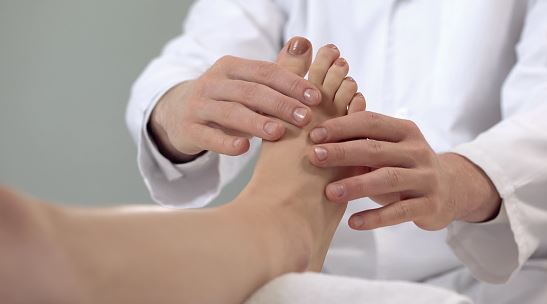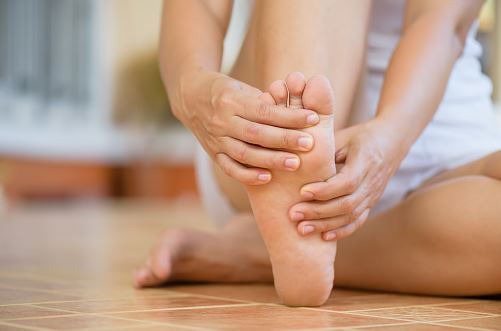Athlete’s foot, also called tinea pedis by dermatologists, is an annoying and widespread fungal disease (mycosis). Around one out of every three people has had athlete’s foot at some point. The fungal disease is usually accompanied by unpleasant itching, redness, and flaking of the skin in the spaces between the toes.
 What exactly is an athlete’s foot? It is an infection of the skin with thread fungi (dermatophytes), yeast fungi (Candida), or in rare cases also mold. More precisely, one speaks here of a mycosis of the feet, a fungal disease on the feet. If you remain inactive, the aforementioned thread fungi can multiply and affect other parts of the body. Like hair and nails, for example.
What exactly is an athlete’s foot? It is an infection of the skin with thread fungi (dermatophytes), yeast fungi (Candida), or in rare cases also mold. More precisely, one speaks here of a mycosis of the feet, a fungal disease on the feet. If you remain inactive, the aforementioned thread fungi can multiply and affect other parts of the body. Like hair and nails, for example.
In most cases, athlete’s foot is caused by filamentous fungus. The transmission takes place either directly from person to person or via shared objects such as towels. The most common places of infection are facilities where many people walk barefoot, for example in the swimming pool, in the sauna, or the shower of the fitness studio. The infection is promoted by the warm and humid climate caused by insufficient drying of the feet or sweaty feet.
Athlete’s Foot Home Remedies
 There are plenty of home remedies for athlete’s foot. Some help and some are less promising. Here are some you should try out:
There are plenty of home remedies for athlete’s foot. Some help and some are less promising. Here are some you should try out:
- Baking powder for dry feet: Athlete’s foot is particularly likely to spread in damp skin regions. You will find the best conditions in the spaces between the toes because socks and stockings do not absorb sweat. Baking powder, i.e. sodium hydrocarbonate (baking soda), helps here if you sprinkle it daily on your feet or between the diseased toes. The baking soda has a drying effect.
- Honey against inflammation: honey is a popular home remedy in many cases, including athlete’s foot. Carefully coat the affected areas with honey. After a certain period of treatment, the honey can develop its anti-inflammatory and wound healing properties and counteract athlete’s foot.
- Regular salt baths: The itching that accompanies the disease is particularly annoying and uncomfortable. To combat this, take a daily salt bath for your feet. On the one hand, it stimulates blood circulation, and on the other hand, the salt has an anti-inflammatory, antipruritic, and germ-reducing effect. Very important: do not dry your feet after the bath! Let them air dry so that the salt can work best. For a salt bath, dissolve 5 tablespoons of sodium chloride, i.e. simple household salt, in 1 liter of warm water and bathe your feet in it for 10-20 minutes. No longer, as otherwise, the skin will soften too much, and the fungus may spread further.

